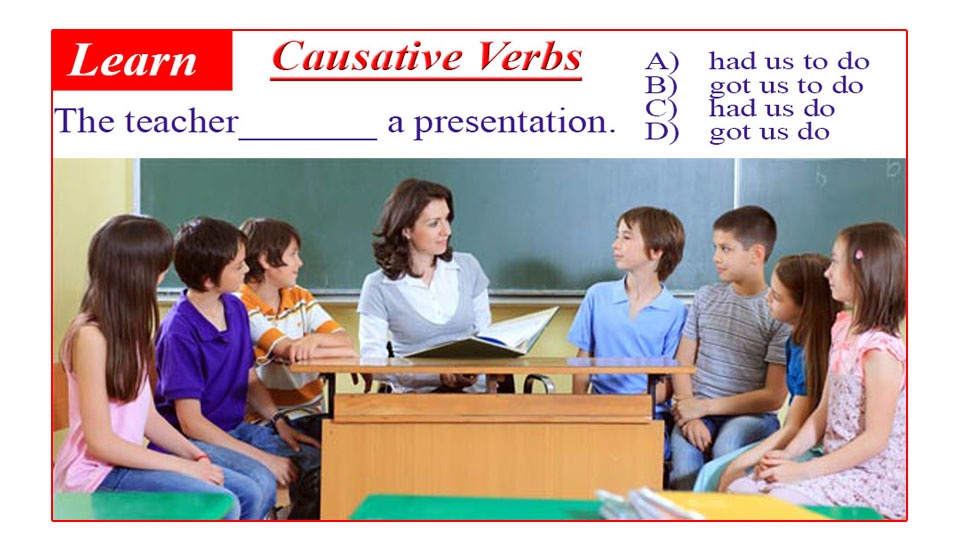Causative verbs are used when one thing or person causes another thing or person to do something. Or it expresses an action which is caused to happen. English has three true causative verbs: let, have, make, but there are other verbs such as cause, allow, help, enable, keep, hold, force, require and persuade indeed which are not causative verbs but similarly used as causative verbs. ESL learners should study causative verbs to construct their sentences accurately.
Causative Verbs: Let, Have, Make
Let: To allow someone to do something.
Form: [let + person + verb]
- The teacher let the students leave the class.
- I won’t let her lend him money.
- Will your parents let you go to the party tonight?
Have: To give someone the responsibility to do something.
FORM: [have + person + verb]
- We’re having mechanic repair our car.
- You’ve had your hair cut.
- Please have your secretary fax me the information.
Get vs. Have
Sometimes “get someone to do something” is interchangeable with “have someone do something,” but these expressions do not mean exactly the same thing. Consider the examples below:
- I got the mechanic to check my brakes.
(At first the mechanic didn’t think it was necessary, but I convinced him to check the brakes). - I had the mechanic check my brakes.
(I asked the mechanic to check the brakes).
Note: Get someone to do something means to convince someone to do something, and it takes an infinitive verb not a base verb.
Make: To force someone to do something.
FORM: [make + person + verb]
- The teacher made him apologize for what he had said.
- Nothing will make me change my mind.
- She made her children do their homework.
IMPORTANT
Causative Structures: There are two basic causative structures: an active form and a passive form. To distinguish the differences consider the examples below.
- Ali had his sister write the letter. (Active form)
(Ali didn’t write the letter. His sister wrote the letter. In a sense, Ali asked his sister to write the letter and she accepted.) - Ahmed had the house painted. (Passive form)
(Ahmed did not paint the house. Someone else painted the house but, in this form we don’t know who.)
We hope the explanations were useful for English learners. Please tell us your feedback about the lesson in the comment box below!


2 comments
How to change this sentence to passive : I had had Ali to have a cup of tea
Ali: What an ugly and clunky sentence to use.
Try working instead from “I had invited Ali to have a cup of tea.” Then the passive becomes “Ali had been invited (by me) to have a cup of tea.” You don’t have to include the “by me,” but that might clarify to the reader who did the inviting in that scenario.
I suppose as an exercise teaching passive voice, it’s not an absolutely awful example. HOWEVER…
As a former editor, I would recommend this usage: “I had invited Ali FOR a cup of tea.” That’s a better way to say it, because it’s clearer and more elegant. Active voice is almost always preferable to passive for those reasons. Passive voice is the weapon of the dishonest and sneaky, namely, the propagandist, the liar, and the irresponsible. I would love to have it eradicated from the English language, forever.